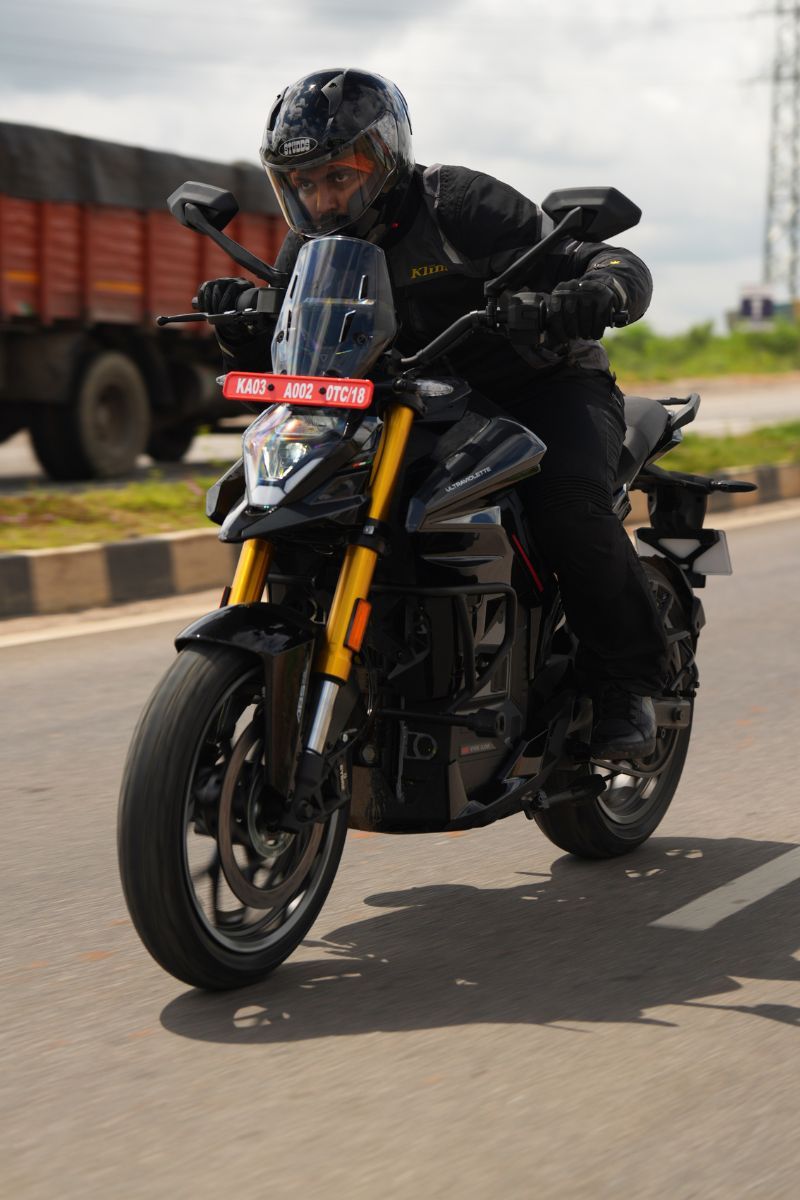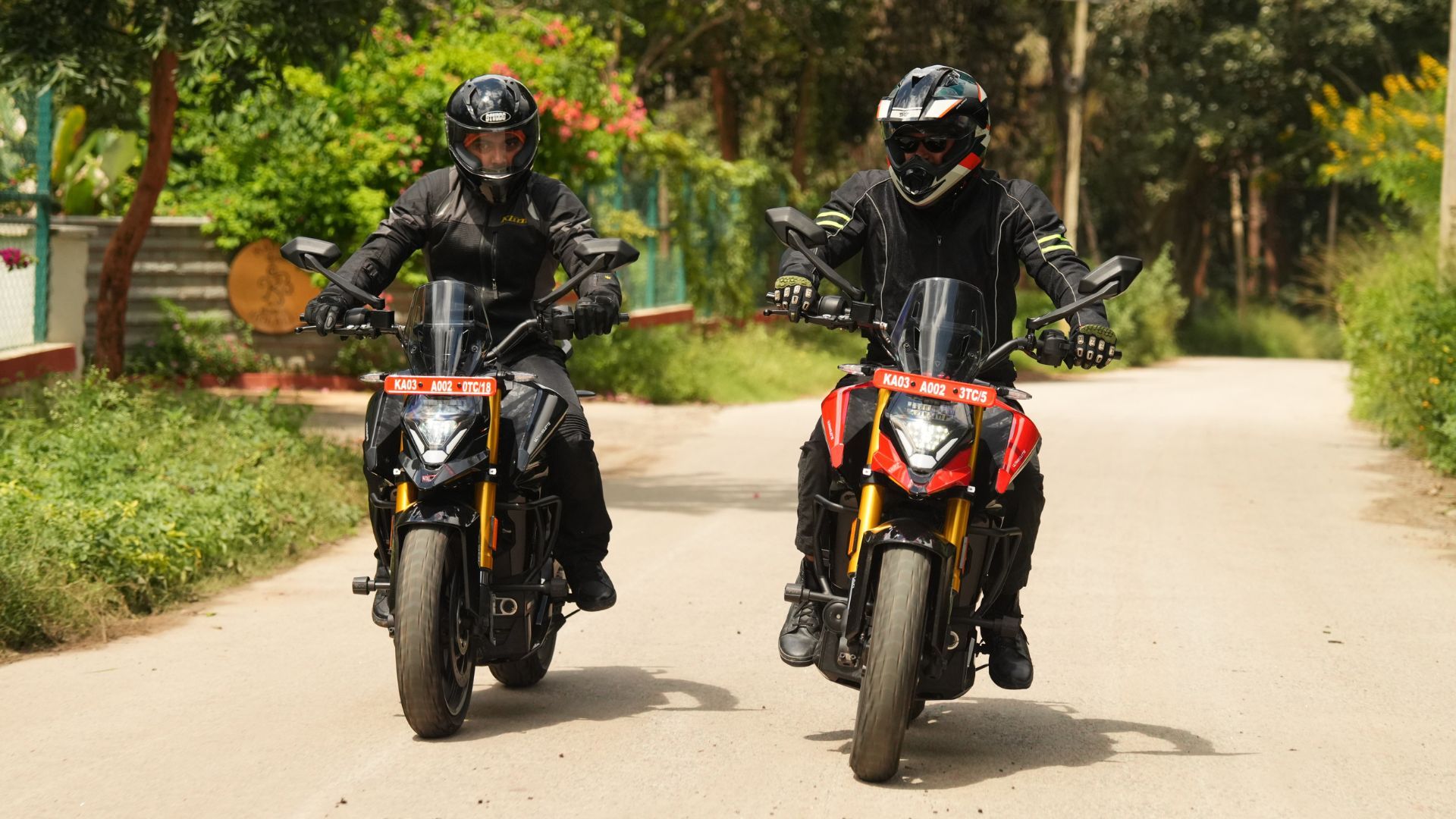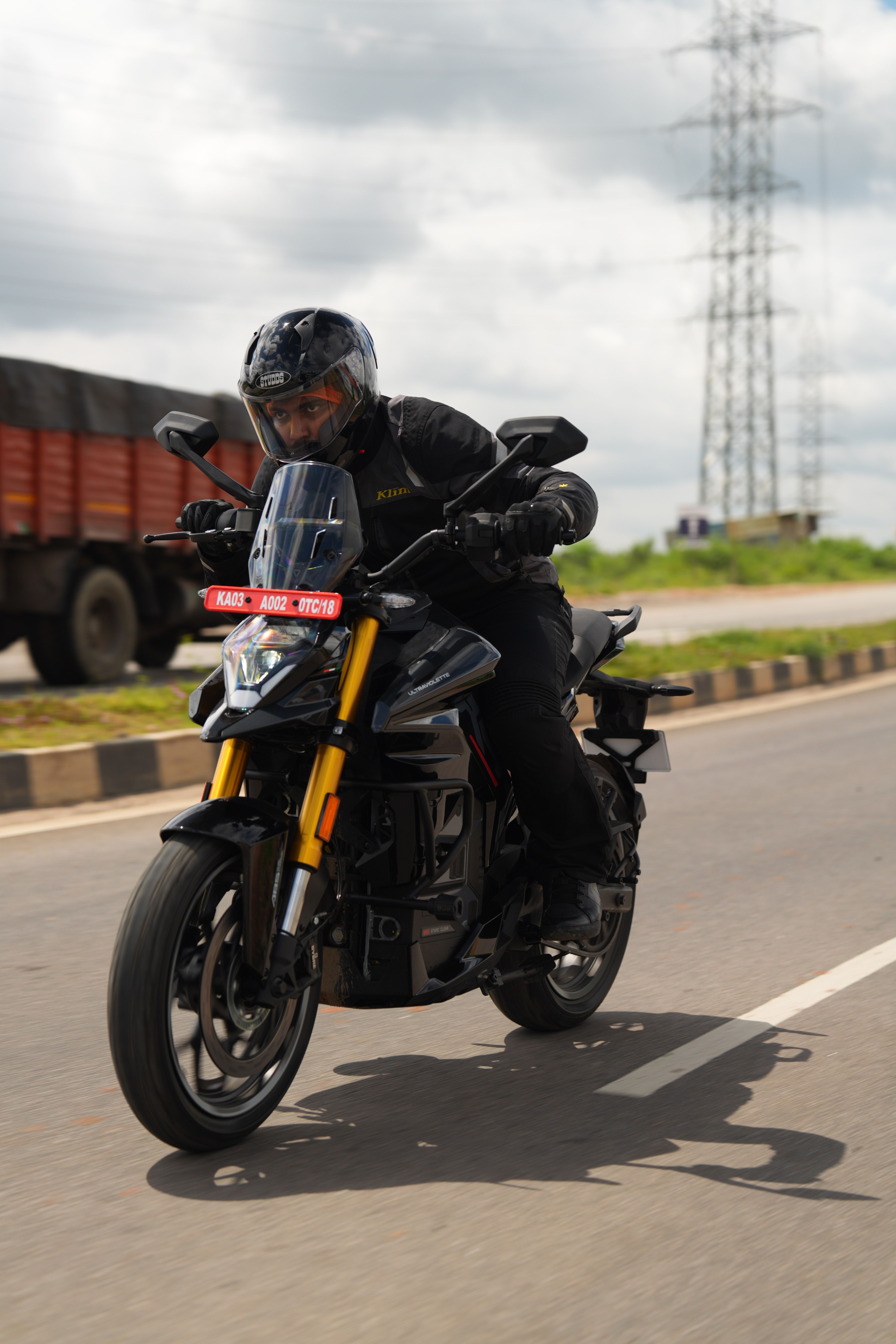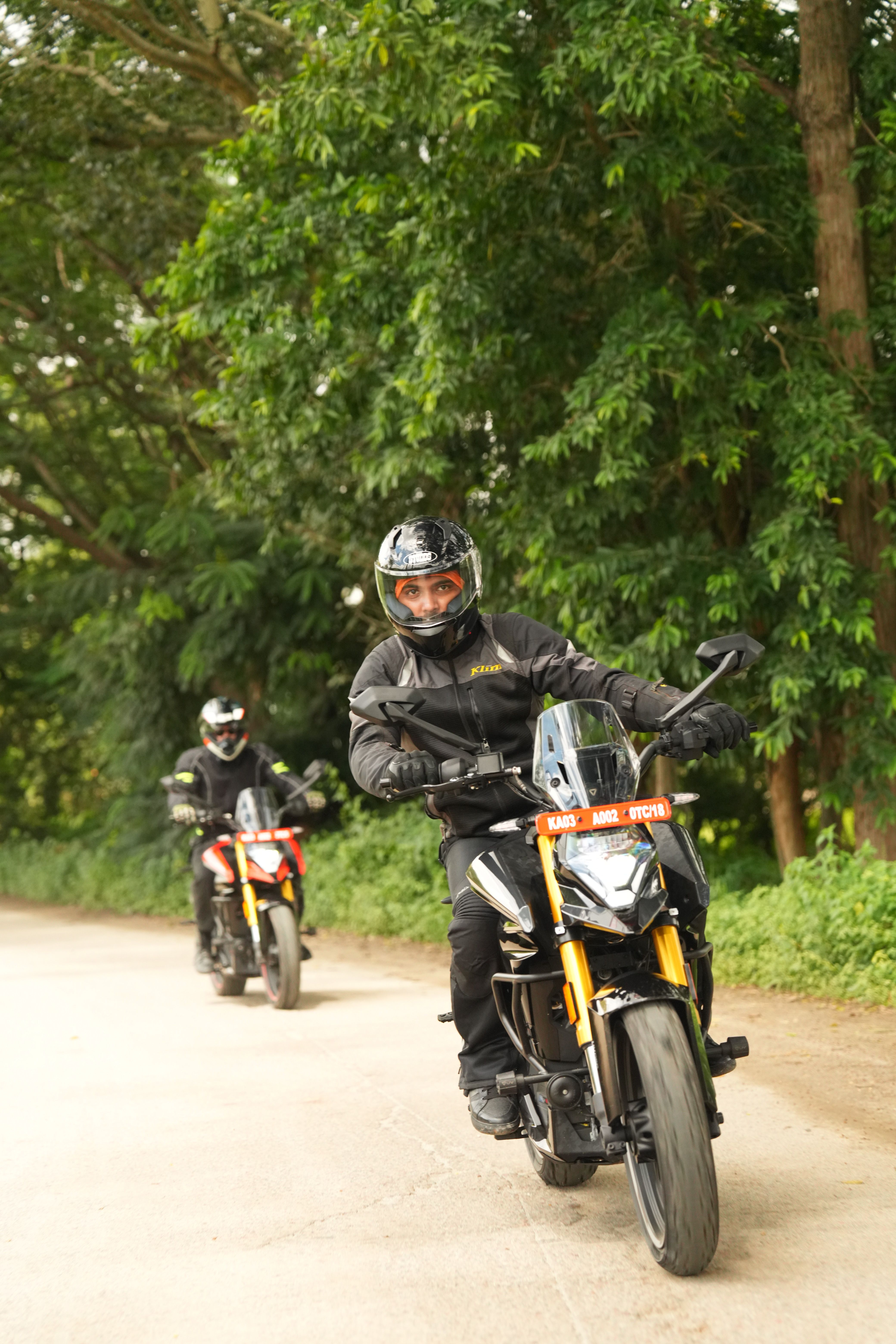Back in 2019, Ultraviolette’s F77 made motorcycling circles sit up in disbelief. Here was a motorcycle that didn’t just run on electrons, it looked like something sketched out of sci-fi anime and polished in a Milanese design studio. It had sharp bodywork, a futuristic cockpit, and the kind of stance that earned it awards and Instagram reels in equal measure. The F77 was India’s first electric motorcycle that didn’t look apologetic. It turned heads, got people arguing, and instantly positioned Ultraviolette as the poster child of a truly ambitious “Make in India” brand.
That kind of debut is always difficult to follow. How do you outdo a bike that disrupted expectations so completely? Ultraviolette’s answer has been to look inward, mature a little, and build something designed less to shock and more to slot into everyday lives. That is where the new X47 Crossover enters the story. It doesn’t scream rebellion like the F77. Instead, it aims for something subtler: a blend of commuter practicality and ADV inspiration, dressed up with the same engineering ambition that made the F77 such a talking point.
Prepare For Takeoff
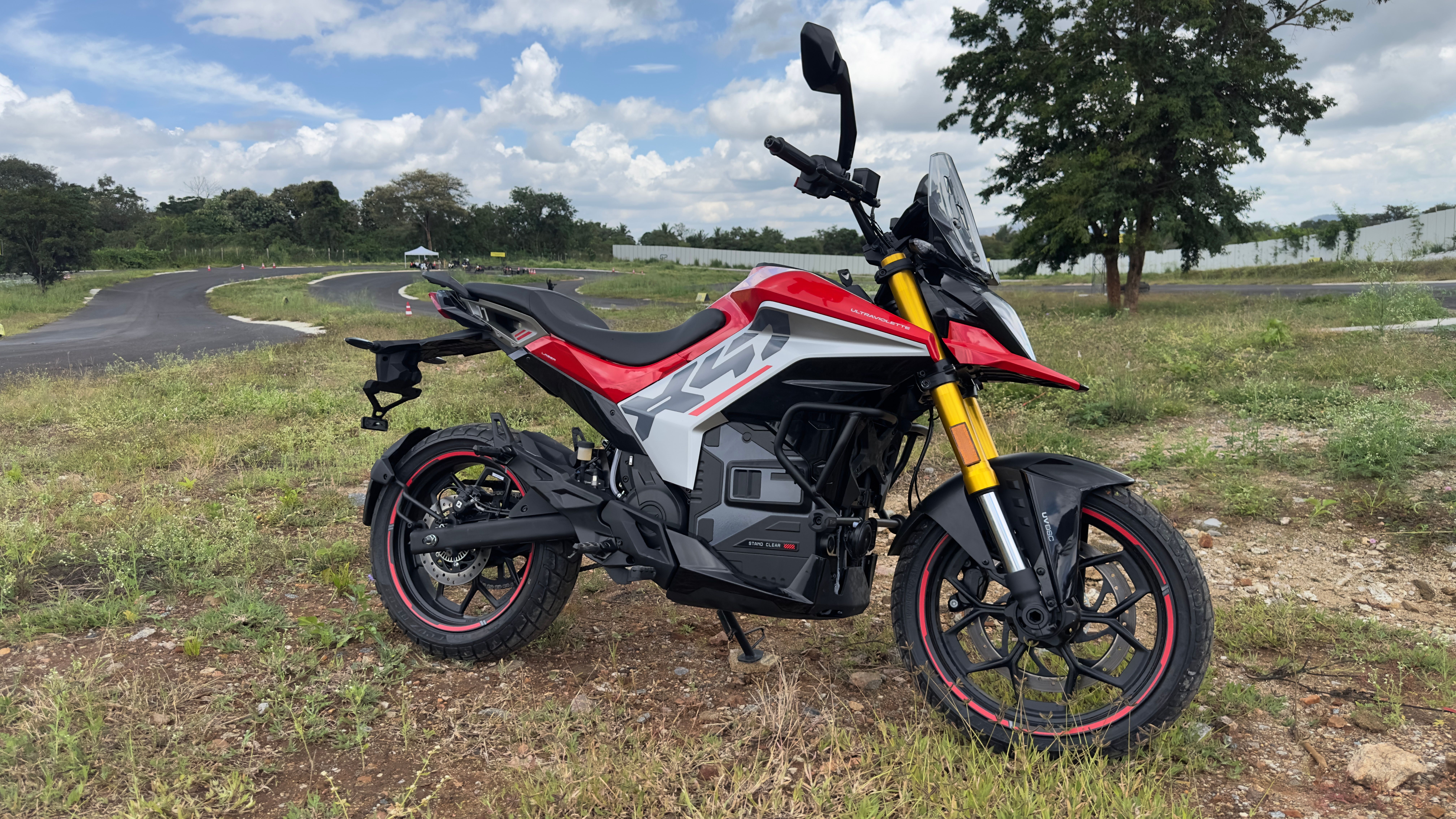
Look at the X47 from across the paddock and its identity is immediately clear. This is a crossover: part naked, part ADV, with Ultraviolette’s own flourishes layered over the template. The beak under the LED headlamp, the stubby windscreen, and the tall, wide handlebar are familiar adventure cues. The exposed battery pack, sharp side panels and that distinctive hollow tail section give it a futuristic silhouette without tipping into the outrageous. It is recognisably Ultraviolette, only more approachable.
The ergonomics follow the same brief. The official seat height is 820mm, though once you sink into the suspension and narrow midsection, it feels closer to 790mm. Shorter riders will not find it unmanageable, while taller ones get a broad, accommodating perch. The wide seat is comfortable for longer rides, though it does firm up after half an hour. Combined with the upright posture and mildly rear-set footpegs, the bike feels equally suited to the office commute and the weekend dash to the hills.
And then there is the suspension. With 170mm of travel at both ends, the X47 deals with India’s bad roads better than any Ultraviolette before it. We tested it at the GP1 Performance Zone outside Bengaluru, where the radar features were demonstrated on the tighter inner loop before we were let loose on the faster outer circuit. The track’s elevated corners, slick with a passing shower for the last batch of riders, still revealed a motorcycle that felt planted and confidence-inspiring. For my run the sun came out, and the suspension shrugged off bumps and ripples without fuss.
The highway test proved just as telling. On NH948, the road that connects Coimbatore to Bengaluru, the X47 cruised at 120kph with remarkable stability. It was here, at a toll booth, that my rear number plate rattled free. It was screwed on instead of riveted, which is a small detail but a revealing one. A short diversion onto muddy backroads gave me a chance to check the ABS response. While I did not lose control, the feedback felt hesitant rather than confident. It was a reminder that in this bike, polish is still playing catch-up with ambition.
Performance itself is familiar, since the X47 carries over the same 30kW (40hp) motor and two battery options from the F77. The 7.1kWh pack offers a claimed 211km, while the 10.3kWh version stretches that to 323km. Top speed sits at 145kph and the 0–100kph run is claimed at eight seconds flat. These figures place the X47 alongside a healthy 250cc petrol rival, though the electric torque gives it a more urgent feel than the spec sheet suggests.
Three modes let you shape the experience. Glide is efficient but dull, Combat feels like a sweet spot for the city, and Ballistic unleashes the kind of urgency that makes you want to lean harder and stay there longer. Despite the 207kg kerb weight, the X47 never feels clumsy once on the move. Some fellow riders grumbled about uneven fork travel on the track, but I experienced the opposite. The bike felt balanced, settled, and confident.
That poise isn’t accidental. As Vinayak Bhatt, Ultraviolette’s Chief Product Officer, explained to me, the chassis went through multiple failed iterations before arriving at the current setup. Early ladder-frame experiments lacked stability and compromised ergonomics. The breakthrough came when the cast aluminium frame was designed to use the battery as a stressed member, tied into a pivot that links the rear suspension and drivetrain. It was a way of balancing rigidity with durability, while also ensuring the centre of gravity stayed where the rider would feel most in control.
The result is a motorcycle that feels intuitive rather than intimidating, shrugging off rough surfaces and settling confidently into corners in a way that few EVs of this weight manage. It’s telling that Ultraviolette solved the problem not with exotic tech but by rethinking the fundamentals of how the frame and battery interact. That philosophy—getting the basics right before chasing theatrics—says as much about the X47 as the Ballistic mode ever could.
Final Approach

If the suspension is the star of the show, the technology is the supporting cast that keeps Ultraviolette in the headlines. Radar-based rider alerts are standard across all X47 variants, making it the first Indian EV motorcycle to introduce the feature. Developed with Continental, the system scans 200 metres behind the bike and flags blind spots, overtakes, or potential rear collisions. The warnings appear as subtle lights in the mirrors and on the TFT dash. Personally, I am an analogue rider at heart. Blind-spot detection makes sense, but the rest of the alerts do not excite me. That said, I can imagine many riders who would welcome the reassurance. For them, this technology is not a gimmick. It is a safety net, and it shows that Ultraviolette is serious about future-proofing its motorcycles.
The X47 also benefits from a clever onboard charger integrated into the chassis. Bhatt called it the most power-dense air-cooled unit in the world, and the numbers back it up: 2.5kg in weight, 2.5 litres in volume, and capable of 1.6kW charging speeds. It is neat, convenient, and compatible with public car charging stations. Alongside this sits a crisp new TFT screen, complete with an X47-specific layout, that displays everything from tyre pressure to lean angle. Optional extras include front and rear dashcams with a dedicated secondary display. Unfortunately, the wiring for these looked untidy on the test bikes, another reminder that fit and finish need attention.
And that brings me to the weakest link in the package: quality control. From a distance the X47 looks every bit the futuristic crossover it claims to be. Up close, niggles creep in. My rear license plate rattled itself loose at a highway toll booth (resulting in a rather embarrassing ride back to base), the rear footpegs jittered under load, and a couple of stickers sat slightly misaligned on the bodywork and bars. On the test bike with the optional dashcam setup, the wiring wasn’t cladded or concealed, leaving a mild eyesore hanging under the tail. Even the ABS, which kept me upright when I braked hard through a slick patch of mud, felt hesitant in its response — not unsafe, but not as confident as the chassis underneath. These are not deal-breakers on pre-production bikes, but at a price range of ₹2.49 to ₹3.99 lakh (ex-showroom), riders will expect tighter execution.
So where does that leave the X47? For me, the verdict is clear. This is not the F77’s wild sequel. It is something else entirely: a grown-up motorcycle designed for a different kind of rider. The suspension setup is excellent, the stability impressive, and the overall experience surprisingly cohesive. Yes, the weight is noticeable in traffic, and yes, the QC needs work. But judged in its segment, the X47 makes a strong case for itself.
I think this is a bike for the older, more responsible rider. Someone who values safety and stability, who enjoys technology not for its novelty but for the reassurance it brings, and who wants something unique that still punches above its weight. Ultraviolette has not lost its edge. It has channelled it into a motorcycle that feels ambitious without being reckless. In the long arc of Indian motorcycling, that is progress.
